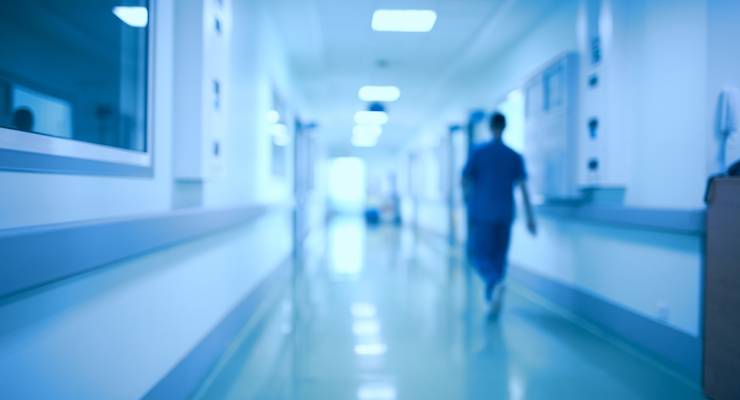
There’s another threat the world faces in the wake of coronavirus, one which is also dangerous, highly contagious and has the ability to overwhelm hospitals: superbugs.
Antibiotic-resistant bacteria are spreading with the speed of coronavirus. COVID-19 patients are being prescribed a steady stream of antibiotics, with around half of those who die testing positive for secondary infections.
Coronavirus won’t be our last pandemic; with every outbreak of infectious disease, antibiotic use will increase, ramping up the evolution of resistant bacteria, fuelling drug-resistant infections in a never-ending cycle.
The UN has warned drug-resistant diseases could cause 10 million deaths each year by 2050. They currently kill 700,000 people a year.
In the words of Professor David Paterson, the director of the University of Queensland’s Centre for Clinical Research, “this is going to accelerate the global pandemic of superbugs”.
Uptick in use during COVID-19
When a coronavirus patient arrives in hospital, one of the first things a doctor will do is prescribe them broad-spectrum antibiotics, Paterson told Crikey.
“It’s hard to make a precise diagnosis of secondary infections, so we’d rather shoot first and get questions answered later,” he said. In previous pandemics, including the 1918 and the 2009 flu pandemics, the killer wasn’t the virus itself, but secondary infections.
“We have to mechanically ventilate COVID-19 patients. Because they’re lying flat on their back, with artificial material going straight into the lungs, they’re prone to getting bacterial phenomena and blood clots,” Paterson said. To minimise this risk, nurses need to reposition patients — something understaffed and overwhelmed hospitals are unable to do, increasing the risk.
A study from Wuhan found more than 90% of COVID-19 patients also received antibacterial treatment. Fifty per cent of those who died tested positive for secondary infections compared to only one of the 137 survivors.
The world is facing shortages of new antibiotics, Paterson said, thanks to high demand in Italy, Spain and New York where superbugs came in as superinfections in COVID-19 patients.
An age-old problem
Importantly, superbugs aren’t new: antibiotic-resistant bacteria have been around since the discovery of penicillin, Mark Blaskovich, Director of the Centre for Superbug Solutions at The University of Queensland told Crikey. “What changed is we’re not finding new and improved strains of antibiotics fast enough,” he said.
Bacteria reproduce faster than human cells. “They can mutate and adapt to overcome whatever specific mechanism the antibiotic uses,” he said. Bacteria are “promiscuous”, sharing information to help other bacteria mutate. In hospitals around the world, infections have been seen that are resistant to all known antibiotics.
To combat this crisis, we need a constant stream of new antibiotics — which, thanks to low profitability, isn’t happening. Companies in the US have gone bankrupt developing antibacterial drugs as consumers aren’t willing to pay high prices.
“The COVID-19 crisis is making us aware we can’t just pull a treatment off the shelf. Development takes a long time — something we discover today won’t be ready for another 10 years for human use,” Blaskovich said.
Our home is girt by sea
Fortunately, our floating island is well placed in the antibiotic-resistant bacteria pandemic, Peter Collignon, an infectious disease physician and microbiologist at the Canberra Hospital, told Crikey.
“Australia has a low level of resistance to most bacteria compared to the rest of the world,” he said (although we have high rates of vancomycin-resistant enterococci, which commonly cause intestinal infections and medium rates of bacteria resistant to golden staph antibiotics).
In Australia, a number of recommendations from a 1999 inquiry into antibiotic resistance still haven’t been implemented.
There are two reasons for this: limited importation of resistant strains, and infrastructure.
“The main issue is the spread of resistant bacteria in hospitals and the community. Strains, like e coli get into animals and waterways via a positive feedback loop. Good sanitisation prevents this,” Collignon said.
On top of good sanitation, Australia doesn’t import a lot of produce. “Globally, food is a major source of spreading superbugs around. Australia has low resistance rates because we don’t import uncooked foods,” he said.
In fact, Australia may even see a drop in resistant bacteria. Travellers import resistant bacteria in their guts, which can take years to be replaced with regular bacteria. With limited travelling and social distancing, there’s less chance for the bacteria to spread, Collignon said.
But the rest of the world isn’t so lucky. Paterson warned the coronavirus is causing the superbug to accelerate exponentially.
“We don’t know what the rates are now during COVID-19, but we know it’s going to be atrocious,” he said.








All this kerfuffle about breeding resistant bacteria by inappropriate treatment protocols!
The real problem is that the meat industry pours these antibiotics into their product. By the tonne!
Far less significant in Australia and Europe (including the UK) than in the US).